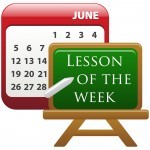Tiger Woods in the Fairway Bunker: No, Peter, He Doesn’t “Maintain his Height”
By Wayne | Videos: As Seen On TV and Extras

When CBS slowed down Tiger’s beautiful pitching wedge shot from the fairway bunker on the first hole of the final round of the PGA Championship, I had an immediate feeling that I knew what the commentary would be. Of course, as everyone knows, you can’t hit a fairway bunker shot if you “dip”, another synonym for lowering during the swing, because you will always hit behind it. I’ve seen this movie before, watching Butch Harmon explain how Jay Haas was “staying tall” and “keeping his levels” while hitting an iron out of a fairway bunker, when right in front of him the guy he was talking about was lowering going back and in transition like he does on every shot. I knew Tiger has never hit a full shot he didn’t lower on, so it was no surprise when a) Peter Kostis states that the reason Tiger made such ball first contact was that he “was not losing his heighth (sic) (the word is “height”) with his head”, and that he was “keeping his level really, really well”. This is a perfect example of a logical conclusion that is not backed up by the evidence presented by the video of the shot. So, I blow up the swing, put a line on top of Tiger’s head (the camera angle isn’t perfect, but the camera is fixed which makes the exercise valid), and watch Tiger lower in the backswing and then lower more on the downswing, exactly how he hits every shot. I cringe when I think of the players who will go out and try to stay extra tall on their fairway bunker shots, not realizing that when they hit the ball fat out of the sand it’s because of poor sequence or clubhead throwaway, the same reasons they never get good contact from the fairway either. After all these years I thought these guys (Nick and Pete) might have learned their lesson on this point, but it doesn’t seem that that’s the case.
Continue reading



